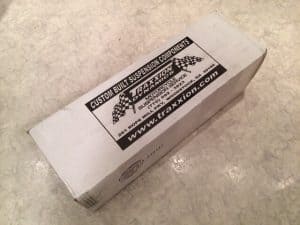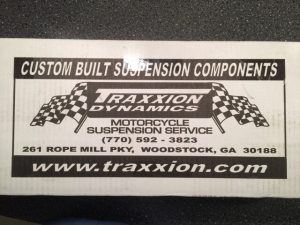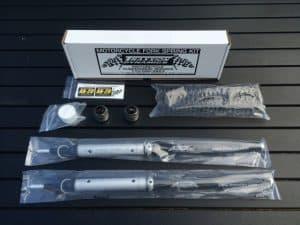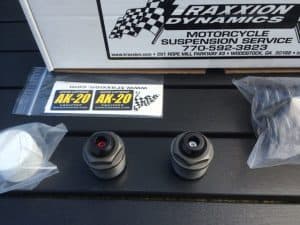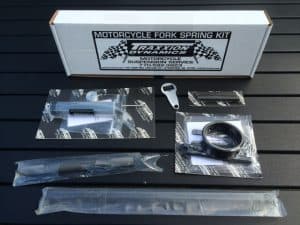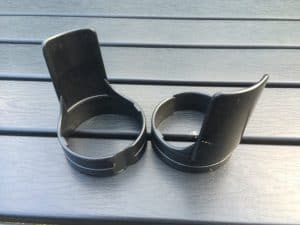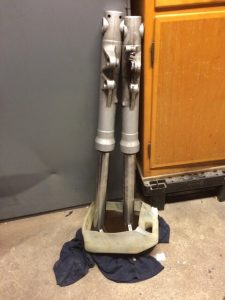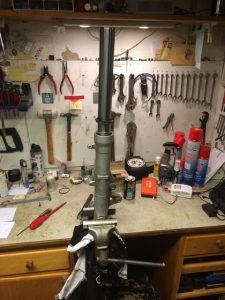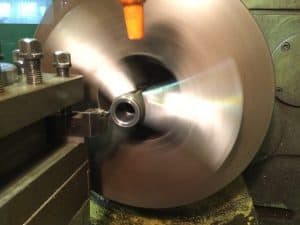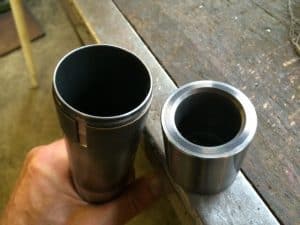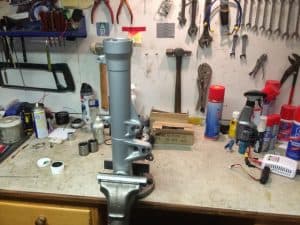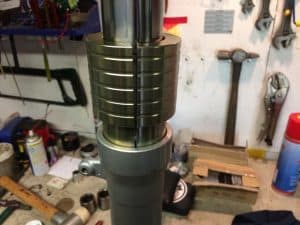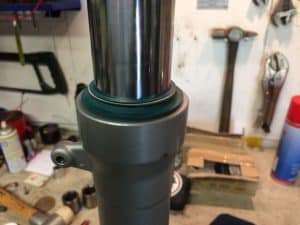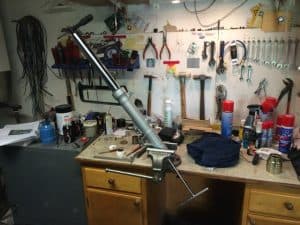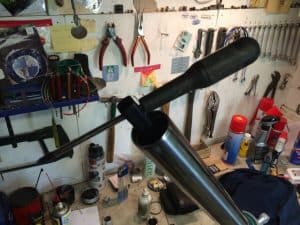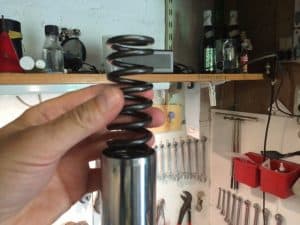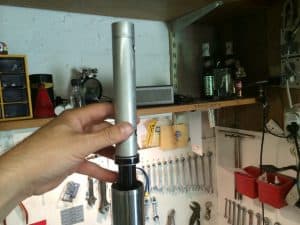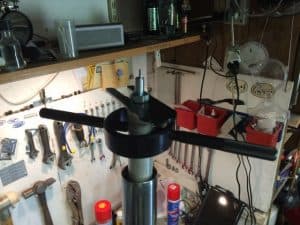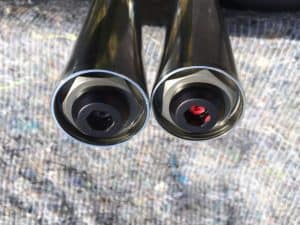I was never really happy with the front fork on my BMW F800S.
It’s a 43mm Showa fork, and plenty strong for a 207 kg bike, but it’s clearly made to fit a budget, so damping is really poor, and internal friction is huge.
Not the best combination because you have little feel for the front end when braking into corners, and the bike is not stable in curves with uneven tarmac.
I tried to dump in a set of MUPO damper valves, but that just increased the internal friction. Lowering the front or changing the fork oil to a different weight did not provide any real improvements. I thought about fitting a Ôhlins upside down fork or similar, but it’s a major rebuild with new T-bridges, steering lock, Bars, Ingition key, Brakes, etc. And I couldn’t be sure the bars would clear the fairing or tank (That’s often a problem).
But I discovered that the Traxxion AK-20 cartridge dampers that could be installed in the original front fork. They are certainly not cheap, but every review I read was extremely positive.
So I pulled the trigger and after a few weeks this parcel arrived.
The Parcel contained the fork cartridges, springs and washers, adjustable end caps, oil, tools, instructions, and even a t-shirt and a fancy CNC milled bottle opener 🙂
I also bought a set of low friction fork seals from SKF, and a set of fork tube protectors.
I have a firm principle not to make irreversible mods, and as the inner fork tubes had to be modified, I bought a spare front fork off eBay to install the AK-20’s . This also gives me the time I want/need to do the installation because the stock forks can stay on the bike while I’m working on the new forks.
Here that are being taken apart – working on telescopic front forks is actually an art form 🙂
The internal dampers must be removed from the fork tubes in order to make room for the cartridges, and you need a lathe for this job.
Installation: This is LEGO for big boys 🙂
Done 🙂
Installation of the new forks.
So – Was it worth it ?
The short answer is YES, YES, YES !!!
Spring rate seems more or less to be the same as on the stock fork, but break-free friction is a lot smaller, and damping is sooo precise and adjustable.
When I brake in to a corner I suddenly have a very precise feel for what the front wheel is doing, and I soon started to enter the turns at speeds that would certainly have created a wobble when the front brake was released with the stock fork.
Even the braking is much more precise, probably because of the reduced friction that allows the fork to work much more accurately.
When acclerating out of a bumpy corner, I now have a completely stable bike that does not jump or buck to the same degree as it did before.
The bike is simply transformed !!!
This is probably the finest suspension upgrade I ever made, and the humble Showa fork now feels in the same league as the WP fork on my Duke 690. It’s like getting a new bike !

